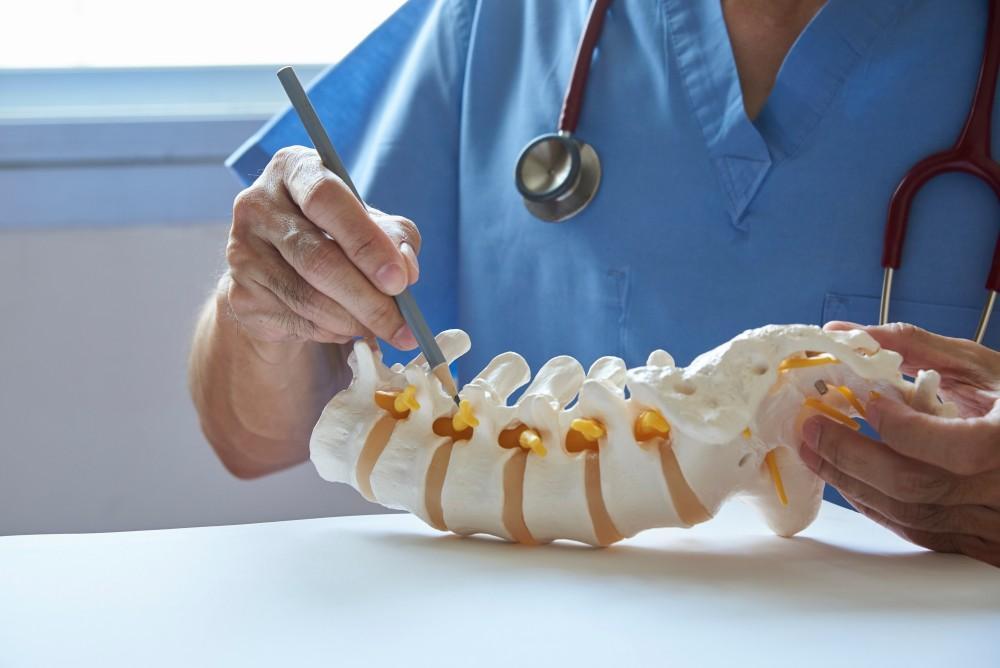
Which of These 4 Types of Back Surgery Is Right for You?

The spine is an amazing example of biological architecture — strong enough to keep your back straight and support your head upright but flexible enough to let you bend, flex, and twist. It’s not indestructible, though. Due to injury, disease, and even getting older, structures may become damaged and cease to function properly, leaving you in pain and with a limited range of motion.
If you’re dealing with chronic back issues, you’re in good hands with board-certified neurosurgeon Dr. Kamal R. Woods at Vertrae®. While Dr. Woods and his team always start with conservative treatments to help your back pain, spinal surgery, minimally invasive spinal surgery, and robot-assisted surgery are where they really shine. Which type of surgery is right for you? It really depends on the underlying cause of the problem.
Spinal structure
It’s hard to talk about spine surgery if you’re not familiar with the structure of the spine. An adult human has 24 bony vertebrae that stack up in a column, forming your backbone. They’re held together by a pair of joints, called facet joints, to the bone above and below.
In between each pair of vertebrae lies an intervertebral disc that contains a hard outer shell (annulus) and a gel-like interior (nucleus). The discs’ job is to absorb shock when you move and protect the bones from grating against each other.
The bones and discs can become damaged, either because of an injury or age-related diseases like osteoarthritis (the wear-and-tear kind), bone spurs, and degenerative disc disease. If the discs rupture or herniate, the oozing material can impinge upon nerve roots in the hollow interior of the spinal column, called the spinal canal. That may cause pain, tingling, weakness, and numbness anywhere along the nerve’s length. It may be necessary to repair or replace the disc or alter other structures to give you relief.
4 types of back surgery
There are many different types of back surgery, but the following are four of the most common we perform at our office.
1. Anterior cervical (neck) discectomy
Dr. Woods performs an anterior cervical discectomy to remove a damaged disc that’s causing nerve root compression and radicular (traveling) pain. Since a discectomy is a form of surgical decompression, the procedure may also be called an anterior cervical decompression. The anterior approach, in which the surgeon accesses the site from the front, allows him direct visualization of the cervical discs and may result in less postoperative pain.
This surgery is most commonly performed to treat a symptomatic cervical herniated disc; however, it may also be done to treat degenerative disc disease, remove bone spurs caused by osteoarthritis, and relieve symptoms associated with cervical spinal stenosis (narrowing of the spinal canal).
Dr. Woods often performs fusion surgery at the same time to stabilize the damaged cervical segment.
2. Spinal fusion
A spinal fusion involves placing a bone graft where the disc was originally located to provide stability and strength to that section of the spine. The graft forms a direct bony connection between the vertebrae on either side of the painful disc(s), stopping the motion of that part of the spine and thereby relieving pain.
As part of the fusion, Dr. Woods may place implants and/or pedicle screws to offer internal structural support while the bone fuses. The bone graft may be harvested from the patient, or the surgeon can choose from a number of synthetic bone graft substitutes or extenders.
3. Artificial disc replacement
Dr. Woods uses an artificial disc replacement to provide relief by removing the disc causing pain, and motion at that vertebral level is maintained with a prosthetic implant. It’s similar in theory to the artificial hip and knee replacements orthopedic surgeons use, except in this case, only one of the three joints present at each vertebral level is being replaced, whereas with a hip or knee joint, the total joint is typically replaced.
4. Laminectomy
Laminectomy is another decompression surgery. It creates additional space in the spinal canal by removing bone spurs associated with osteoarthritis of the spine. Dr. Woods removes a small piece of the back part (lamina) of the damaged vertebrae; the increased canal space relieves pressure on the spinal cord or peripheral nerve root.
It’s important to understand, though, that the procedure doesn't cure underlying arthritis that caused the spurs, so it's not likely to relieve chronic back pain caused by other musculoskeletal problems.
Having neck or back pain and wondering if surgery is right for you? It’s time to come into Vertrae® for an evaluation with Dr. Woods, who can determine which, if any, procedure is warranted. To schedule, call us at either location or book online with us today.
You Might Also Enjoy...


4 Benefits of Outpatient Spine Surgery

Am I a Candidate for Kyphoplasty?

Pulled Muscle vs. Pinched Nerve: What's the Difference?

4 Subtle Signs of Sciatica

